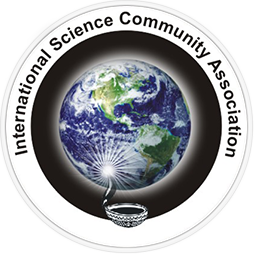Mitigating Environmental Pollution and Water contamination through Bioremediation: A Sustainable Solution
Author Affiliations
- 1Department of Resource Management and Consumer Science, I.C. College of Community Science, Chaudhary Charan Singh Haryana Agricultural University, Hisar- 125004, Haryana, India
- 2Department of Resource Management and Consumer Science, I.C. College of Community Science, Chaudhary Charan Singh Haryana Agricultural University, Hisar- 125004, Haryana, India
Int. Res. J. Environment Sci., Volume 14, Issue (2), Pages 7-12, April,22 (2025)
Abstract
The rapid growth of urbanization and industrialization has significantly increased pollution, primarily due to the release of toxic chemicals into the environment by various industries such as manufacturing (detergents and dyes), agriculture Construction (metals and cement), mining (cyanide and sulfuric acid), and fertilizers and insecticides. In addition to having a negative impact on human, animal, and plant health, these pollutants destroy microbial populations in both aquatic and terrestrial environments, requiring remediation efforts. Human activities, including domestic, agricultural, and industrial practices, significantly impact water and ecosystems, leading to a global water pollution crisis that threatens sustainable development. Surface and groundwater pollution, which makes water unfit for human use, soil erosion, irrigation, industrial requirements, nitrogen cycles, carbon sequestration, and ecological patterns are all consequences of agriculture, a vital economic sector in many nations. Regarding housing, 84% of respondents live in "Pakka" houses, 14% in "Semi Kaccha" houses, with 66.6% owning their homes and 34% renting. For sanitation, 82% have toilets inside their homes, while 18% have them outside but adjacent. Drinking water sources vary: 30% use hand pumps, 18% have municipal taps at home, 14% access municipal taps away from home, and 38% use submersible pumps. Storage methods include pots (34%), water coolers (26%), plastic vessels (34%), and copper vessels (4%). Waterborne diseases such as typhoid (32%), cholera (24%), and dysentery (6%) highlight the health impact of contaminated water, with typhoid causing high fever and gastrointestinal symptoms, cholera leading to severe diarrhoea and dehydration, and dysentery resulting in intestinal inflammation, bloody diarrhoea, and abdominal pain.
References
- Ayilara M. S., Olanrewaju O. S., Babalola O. O., Odeyemi O. (2020). Waste management through composting: challenges and potentials. Sustainability 12 (11), 4456., undefined, undefined
- Prabagar, S., Dharmadasa, R. M., Lintha, A., Thuraisingam, S., & Prabagar, J. (2021). Accumulation of heavy metals in grape fruit, leaves, soil and water: A study of influential factors and evaluating ecological risks in Jaffna, Sri Lanka. Environmental and Sustainability Indicators, 12, 100147., undefined, undefined
- Mahmood, A., Bilal, B., Naeem, Z., & Iram, S. (2021). Physical, chemical, and biological remediation techniques for textile effluents in context with developed and developing countries. Rhizobiont in bioremediation of hazardous waste, 409-441., undefined, undefined
- Dar, M. A., Shahnawaz, M., Hussain, K., Gupta, P., Sirwal, M. Y., Sadaqat, B., ... & Sun, J. (2023). Natural compounds for bioremediation and biodegradation of pesticides. In New Horizons in Natural Compound Research (pp. 445-488). Academic Press., undefined, undefined
- Kumara, U. A., Jayaprada, N. V. T., &Thiruchchelvan, N. (2023). Bioremediation of Polluted Water. In Current Status of Fresh Water Microbiology (pp. 321-346). Singapore: Springer Nature Singapore., undefined, undefined
- World Health Organization (2023). Drinking Water https://www.who.int/news-room/fact-sheets/detail/drinking-water retrieved on 12/05/2024, undefined, undefined
- Hasan, M. K., Shahriar, A., & Jim, K. U. (2019). Water pollution in Bangladesh and its impact on public health. Heliyon, 5(8)., undefined, undefined
- Chowdhury, S., Mazumder, M. J., Al-Attas, O., & Husain, T. (2016). Heavy metals in drinking water: occurrences, implications, and future needs in developing countries. Science of the total Environment, 569, 476-488., undefined, undefined
- Su, X., Wang, H., & Zhang, Y. (2013). Health risk assessment of nitrate contamination in groundwater: a case study of an agricultural area in Northeast China. Water resources management, 27, 3025-3034., undefined, undefined
- Băhnăreanu, C. (2019). World economic forum 2019: globalization 4.0–A better version. Strategic Impact, (72+ 73), 79-82., undefined, undefined
- Tarfeen, N.; Nisa, K.U.; Hamid, B.; Bashir, Z.; Yatoo, A.M.; Dar, M.A.; Mohiddin, F.A.; Amin, Z.; Ahmad, R.A.; Sayyed, R.Z. Microbial Remediation: A Promising Tool for Reclamation of Contaminated Sites with Special Emphasis on Heavy Metal and Pesticide Pollution: A Review. Processes 2022, 10, 1358, undefined, undefined
- Atuchin, V. V., Asyakina, L. K., Serazetdinova, Y. R., Frolova, A. S., Velichkovich, N. S., & Prosekov, A. Y. (2023). Microorganisms for bioremediation of soils contaminated with heavy metals. Microorganisms, 11(4), 864., undefined, undefined

